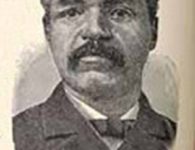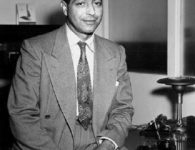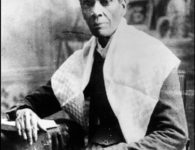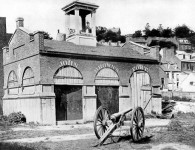Vicente Guerrero was a Black Mexican revolutionary, commander, and politician. He became one of Mexico’s greatest national heroes.
ORIGINS OF VICENTE GUERRERO
He was born in Tixtla, Guerrero on August 10, 1783, to a Black woman by the name of Guadalupe Saldana and a Mestizo named Pedro Guerrero. Politically, he had conflicting views towards Spanish rule compared to his family. The Guerreros had influential people in the military and commercial spheres. His father ran a transport company and was pro-Spanish rule and his uncle was a ranked official in the militia.
In working for his father he traveled Mexico often. This was a time where citizens became more agitated towards Spanish rule and he began to take to the views of Mexican independence. At the age of 27, while working as a gunsmith, Vicente Guerrero joined the insurgency’s southern forces under Jose Maria Morelos at the end of 1810.
ROLE IN THE REVOLUTION
Guerrero first sees action during the Battle of Izucar de Matamoros in Puebla on February 23, 1812. This battle ended in a victory for rebel forces. Following another rebel victory as Oaxaca was taken in late 1812, he was promoted to lieutenant colonel. His commander, Jose Maria Morelos’ capture and killed by the Spanish forces at the end of 1815.
From there Vicente Guerrero fell in with Guadalupe Victoria and Isidoro Monte de Oca’s forces and was promoted to Commander in Chief.
To quell the fighting with the rebels, Viceroy Juan Ruiz de Apodaca offered amnesty. Pedro Guerrero attempted to represent Vicente, but the younger Guerrero refused to surrender. With other rebel commanders wiped out in heated battles, Guerrero was Spain’s main target. The war with the rebels became drawn out as Guerrero shifted the strategy towards guerilla tactics and racked up large victories throughout southern Mexico.
The war with the rebels became drawn out as Guerrero shifted the strategy towards guerilla tactics. This allowed him to rack up large victories throughout southern Mexico.
THE THREE GUARANTEES
When amnesty failed, the Spanish government sent in Agustin de Iturbide to take Guerrero out in November 1820. By this time the revolution had lost some steam throughout Mexico and it seemed like the right time to strike. However, it was strongest in southern Mexico where Guerrero was proving to be a problem.
The two commanders had correspondence throughout late 1820. The letters show that both regretted the violent run-ins and discussed freeing Mexico from Spanish control.
Iturbide manages to sway Guerrero to him as a result of terms of the Plan de Iguala or Plan of the Three Guarantees in Match 1821. These three guarantees were freedom from Spain, unity by dismantling the race-based caste system and slavery, and freedom of religion so that Catholicism wasn’t the sole religion. It allowed for Iturbide to calm the conflicting factions in Mexico and unify them in a bid to rid Mexico of Spain.
The Plan de Iguala intended for King Ferdinand VII to rule New Spain in Mexico City and not in Madrid. Spain rejected Iguala and sent in a new viceroy. When Juan O’Donoju arrived Mexican independence was past the stage of possibility.
SOURCE
–http://www.history.com/topics/mexico/struggle-for-mexican-independence
–http://www.mexonline.com/mexican-independence.htm
–https://www.britannica.com/biography/Vicente-Guerrero





















1 Comment
Ajanta Kamagra Ou Acheter Viagra France Achat De Viagra